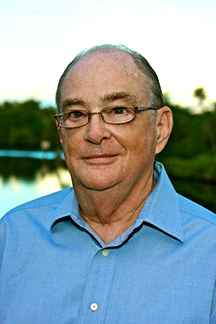INTERVIEW
Long-Term Confidence Versus Short-Term Profits

Walter Deemer began his Wall Street career as a Merrill Lynch research trainee in 1963 and moved into their market analysis department in 1964, where he worked directly under technician Robert Farrell. He has been a full-time market analyst ever since.
Deemer joined Jerry Tsai’s Manhattan Fund just before its record-breaking offering in 1966, observing the “go-go years” from one of the epicenters. He went to Putnam in 1970 to head their market analysis department, eventually becoming a senior vice president and investment policy committee member. He struck out on his own in 1980 via Deemer Technical Research and advised institutional investors until his quasi-retirement in 2010 (he still writes commentaries for some of his old clients). His book, Deemer On Technical Analysis, was published in February 2012 by McGraw-Hill.
Deemer is a founding member and past president of the Market Technicians Association, and a founding member of the American Association of Professional Technical Analysts. He has appeared on the Nightly Business Report and has been the special guest on Wall $treet Week. He was the featured technical analyst in “Dean LeBaron’s Treasury Of Investment Wisdom,” joining such luminaries as John Bogle, Peter Lynch, and George Soros. And finally, Deemer was one of the analysts featured in The Heretics Of Finance: Conversations With Leading Practitioners Of Technical Analysis by Andrew Lo and Jasmina Hasanhodzic.
S&C Editor Jayanthi Gopalakrishnan and Staff Writer Bruce Faber interviewed Walt Deemer via telephone on May 7, 2012.
Walt, how did you get interested in the markets and especially technical analysis?
As a kid, I was interested in statistics. When I was in grade school, I followed the sports pages, and next to the sports pages were the financial pages. My father explained the financial pages to me, so I got interested in them. I kept model portfolios of stocks.
Wall Street is shooting itself in the foot. You would think they would learn something, but there are a lot of greedy people.Then when I went to college at Penn State, there was one brokerage office in town, and out of the three brokers there, two were very technically oriented, one of whom was an adjunct professor.
That was in autumn 1961, and the winter and spring of 1962. If you remember, there was a crash in the stock market in May 1962. The technically oriented brokers had seen it coming, and I was very impressed. I got curious, so one day out of the college library I got Joseph Granville’s A Strategy Of Daily Stock Market Timing For Maximum Profit. I was captivated by it, and I have been hooked on technical analysis ever since. That was 50 years ago.
What do you do now?
I write market commentaries when the spirit moves me and send what I write to friends and clients. I retired at the end of 2010, and I spent all of 2011 working on the book Deemer On Technical Analysis.
Once the book was published, I settled back a little more. The problem is if you have been as involved as I am, the markets are in my blood. I couldn’t just retire. The market is a fascinating creature. Old technicians never retire, they just chart away.
What prompted you to write the book?
I had a long career’s worth of things I had learned. I was lucky because I worked on the buy side from 1966 when I left Merrill Lynch until 1980, when I left Putnam. I was able to work with the best technical analysts on Wall Street. I had some brilliant instructors. I wanted to share some of the things they had taught me, plus some of the things I picked up along the way.